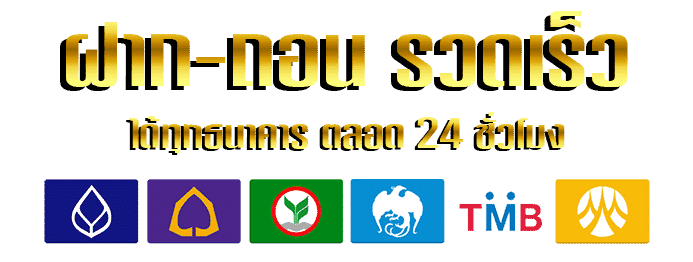
ufabot เว็บตรง ไม่ผ่านเอเย่นต์ มีบริการฝาก-ถอนด้วย True Wallet
ufabot เว็บพนันออนไลน์เจ้าแรกในไทย เว็บตรงลิขสิทธิ์แท้จากบริษัทแม่ ufabet ชื่อดังด้านพนันบอลออนไลน์ และที่ฮิตที่สุดในปี 2024 กับ ufabet168 เว็บตรง จ่ายสูง ไม่มีขั้นต่ำ มาพร้อมทางเข้าเล่นผ่านมือถือ มีโปรโมชั่นโบนัสและ
เครดิตฟรีต้อนรับสมาชิกใหม่ทุกท่าน สมัครสมาชิกแล้วเข้าระบบได้เลย ไม่ต้องติดต่อแอดมินด้วยระบบอัตโนมัติอัจฉริยะใหม่ รองรับการฝาก ถอน และทำรายการกับบัญชี True Wallet พร้อมเปิดให้บริการแล้ววันนี้
เว็บตรงผ่านระบบออโต้
ufabot มาสนุกกับเกมพนันออนไลน์ที่ดีที่สุด ด้วยเทคโนโลยีที่ทันสมัยและระบบการบริการที่มั่นคงและปลอดภัย ไม่ต้องกังวล รวมถึง ufabet และระบบพนันออนไลน์ที่ให้เครดิตฟรีและระบบฝากถอนที่ง่ายและทันที รับเงินรางวัลของคุณทันทีในบัญชีของคุณ โดยไม่มีค่าธรรมเนียมเพิ่มเติม ไม่ต้องโอนเงิน ไม่มีขั้นต่ำ
ufabet168 เล่นพนันออนไลน์ผ่านมือถืออย่างสนุก รับโบนัสปลายยิ้ม ลงทะเบียนเพื่อเล่นฟรี ลองเล่นเกมสล็อตฟรี คุณสามารถสนุกสนานกับการเล่นพนันออนไลน์ผ่านมือถือของคุณ รับโบนัสปลายยิ้ม และเราเชื่อมั่นว่าคุณจะพึงพอใจกับทุกเกม ทุกสไตล์ ทุกรสชาติ ที่มีให้ในเว็บไซต์เดียว รวมถึงทางเข้าสมัครสมาชิกเพื่อเล่นพนัน
ออนไลน์ผ่านมือถือของคุณ รับโบนัสปลายยิ้ม และเข้าร่วมพนันออนไลน์ได้อย่างง่ายดายและเพลิดเพลินไปกับเกมคาสิโนออนไลน์มากมายทางออนไลน์อย่างสมบูรณ์สนุกกับการเล่นพนันออนไลน์อย่างปลอดภัยและไม่จำเป็นต้องฝากเงินล่วงหน้าบนเว็บไซต์ของเรา ง่าย สะดวก ไม่ต้องกังวลกับเว็บไซต์อื่น ๆ ไม่ต้องเสียเงินเพื่อเข้าร่วมเล่นพนันออนไลน์ มั่นใจได้ในความพึงพอใจของเว็บไซต์ที่มีชื่อเสียงและเป็นประโยชน์ที่สุด ไม่ต้องใช้เอเยนต์เพื่อเข้าร่วมเล่นพนันออนไลน์และรับเงินจริง

เกมสล็อต โอกาสชนะรางวัลสูงสุดในเกมออนไลน์
เว็บคาสิโนที่มั่นคงและดีที่สุดของเอเชีย มอบความสนุกสนานและโอกาสที่จะชนะรางวัลใหญ่ทุกวัน นอกจากนี้ เกมสล็อตของเรามีอัตราการชนะสูง ซึ่งเพิ่มโอกาสในการเล่นเกมออนไลน์สูง เครดิตฟรี ไม่มีขั้นต่ำ เขียนบทความเกี่ยวกับอัตราการชนะที่เพิ่มขึ้น 10 เท่าและประสบการณ์การเล่นเกมสล็อตออนไลน์ที่ดีที่สุดสำหรับผู้เล่น
รวมถึงเกมออนไลน์ที่มั่นคง สิ่งที่เรามีที่นี่คือโอกาสมากมายทุกวัน ในความโปร่งใสอย่างสมบูรณ์ การพนันออนไลน์กำลังได้รับความนิยมสูงสุดทั่วโลก ไม่ว่าจะเป็นชาวไทยหรือชาวต่างชาติ ทุกคนต่างก็ชื่นชอบและเข้ามาเล่นบ่อยมาก
เล่นเกมการพนันออนไลน์ที่สนุกที่สุด
เพลิดเพลินไปกับการเดิมพันในเกมสล็อตออนไลน์ที่ทันสมัย เสถียร และทำกำไรได้จริง พร้อมความสนุกแบบไม่จำกัด เพลิดเพลินไปกับการเดิมพันออนไลน์ ทำกำไรได้แน่นอน และมีเกมสล็อตที่ไม่ซ้ำใครให้เลือกมากมาย อีกทั้งยังสามารถโอนเงินเข้าบัญชีของคุณได้โดยไม่มีขั้นต่ำ พร้อมโอกาสสร้างรายได้ที่ทันสมัยและสนุกสนานได้ทุกเมื่อ สมาชิกสมัครเล่นเกมออนไลน์ด้วย API เซิร์ฟเวอร์ที่เสถียรและเสถียร และระบบ API
เซิร์ฟเวอร์ที่มีใบอนุญาตจริง ซึ่งสมาชิกสามารถสมัครได้ฟรีผ่านหน้าเว็บโดยตรง เว็บไซต์โดยตรง บริษัทใหญ่ การเล่นเกมออนไลน์มีโอกาสทำกำไรสูง เดิมพันไม่จำกัดผ่านมือถือ สะดวก รวดเร็ว ทันสมัยมาสนุกกับการพนันออนไลน์ เพลิดเพลินกับสิทธิพิเศษมากมาย ทำธุรกรรมได้ง่าย ฝากและถอนได้โดยไม่มีขั้นต่ำ

บริการตลอด 24 ชั่วโมง
พร้อมบริการเต็มรูปแบบตอบสนองทุกความต้องการใครไม่อยากพลาดโอกาสทองนี้โปรโมชั่นสล็อต คุณต้องรีบลงทะเบียนกับเราใช้งานได้ฟรีและมีการอัปเดตเกมสล็อตเครดิตฟรีใหม่ ๆ ให้เลือกทุกสัปดาห์ด้วยทีมงานมืออาชีพซึ่งให้บริการที่ดีที่สุดแก่ทุกคนรวมถึงระบบ API ที่แท้จริงและเชื่อถือได้สูง มันรวดเร็วและทันสมัย ไม่มีข้อผิดพลาดเกิดขึ้นแม้แต่ครั้งเดียว ในรูปแบบธุรกรรมของเรา ทุกคนจะไม่พบสิ่งกีดขวางใดๆ พร้อมรองรับบัญชีผู้ใช้ Wallet อีกด้วย ไม่มีช่องกระเป๋าเงินขั้นต่ำ ไม่มีการหักค่าบริการเพิ่มเติม ตลอดจนข้อเสนอพิเศษอื่นๆ อีกมากมายที่เราได้เตรียมไว้ให้กับสมาชิก รับโปรโมชั่นพร้อมความปลอดภัยระดับสูง

แนะนำเกมน่าเล่น
- เกม Piggy Gold ค่าย PGSoft
- เกม Pool Rummy ค่าย JILI
- เกม Bonus Bear ค่าย Joker
- เกม Gates of Gatot Kaca ค่าย PragmaticPlay
- เกม 28 Bars ค่าย SpadeGaming
เล่นเกมสล็อตออนไลน์ได้โดยตรง รับรางวัล 24 ชั่วโมง
เกมทุกแบบที่คุณต้องการที่นี่ที่เดียว 24 ชั่วโมงเพลิดเพลินไปกับเกมและกาแล้วเข้าร่วมเกมได้ทุกที่ทุกเวลา มีโปรโมชั่นมากมาย และเล่นเกมส์หลากหลายได้ที่นี่ มั่นคง ปลอดภัย และอัตราการจ่ายเงินรางวัลโบนัสสูง ระบบเกมพนันออนไลน์ที่ไม่ยุ่งยาก รองรับการใช้งานวอลเลทและธนาคาร พร้อมเกมคาสิโนที่มีเพลงสุดคุ้ม สนุกสุดมัน พกพาความรวย ไปกับคุณสมัคร สนุก ทำกำไรได้ง่าย รับโบนัสมากที่สุด และมั่นคง
โปรโมชั่นอีกมากมาย




ทำไมต้องเลือกเว็บเกมสล็อต ufabot
ufabot นำเสนอเกมเดิมพันกีฬาออนไลน์ที่ได้รับความนิยมมากที่สุดในเอเชีย และเป็นเว็บไซต์ที่ให้บริการเกม eSports มากที่สุดในประเทศไทย
ระบบฝากและถอนเงินอัตโนมัติอัจฉริยะ ช่วยให้การฝากและถอนเงินรวดเร็ว อนุมัติภายใน 30 วินาที ซึ่งเป็นระดับการเดิมพันที่เร็วที่สุดบนโซเชียลมีเดีย
มีเกมคาสิโนหลายประเภท และเป็นเว็บไซต์, เว็บไซต์โดยตรง, เว็บไซต์หลัก ดังนั้นคุณจึงมั่นใจได้ว่าโปรโมชั่นจะถูกแจกแน่นอน
มีความมั่นใจในเกมออนไลน์ที่เปิดดำเนินการมากว่า 5 ปี และมีสถานะทางการเงินที่มั่นคง และสมาชิกที่เชื่อถือได้มากกว่า 100,000 รายที่สนุกสนานกับเรา
การขอเป็นสมาชิกมีความรวดเร็วและเร่งด่วน ขั้นตอนการสมัครสามารถเริ่มได้ด้วยตัวเองที่บ้านง่ายๆ
เว็บไซต์เต็มไปด้วยโปรโมชั่นมุ่งเป้าไปที่ผู้เล่นใหม่ หรือผู้เล่นออนไลน์ทั่วไป สามารถรับโปรโมชั่นดีๆได้ทุกที่
บทความที่น่าสนใจ

ufabet168 เปิดประสบการณ์คาสิโนสดเสมือนจริง
ufabet168 เป็นเว็บไซต์พนันออนไลน์ที่น่าสนใจและมีคุณภาพที่เน้นการให้บริการตรงและไม่ผ่านเอเย่นต์ ซึ่งทำให้ผู้เล่นมีความมั่นใจในการเข้าใช้บริการ

ufabet มีความมั่นคงความปลอดภัยในการลงทุนมาก
ufabet สล็อตแห่งปีไม่ผ่านเอเย่นไม่ผ่านคนกลางทุกรายการทำธุรกรรมฝากถอนผ่านเว็บไซต์เว็บพนันเล่นง่ายเล่นได้ทุกเวลา เปิดโอกาสให้นักพนันทุกคน



